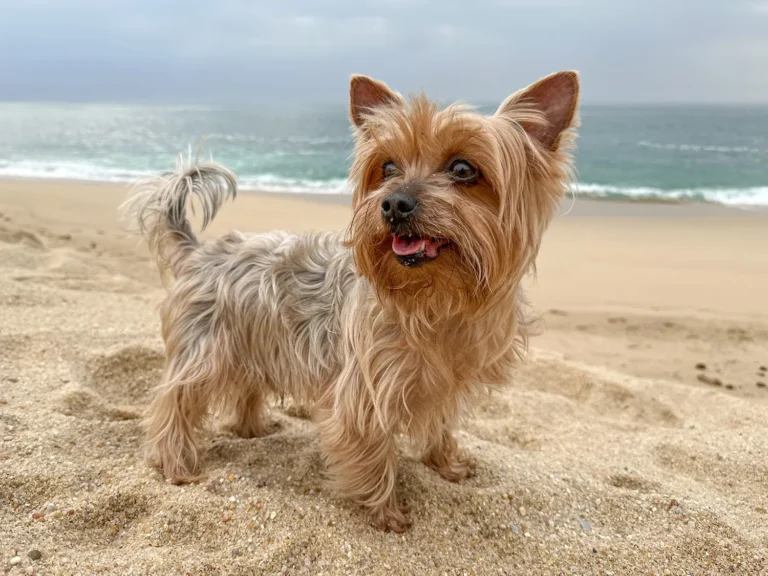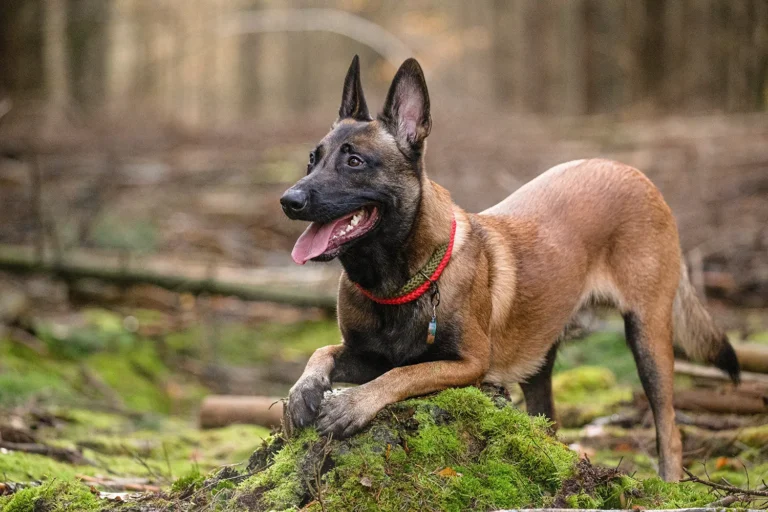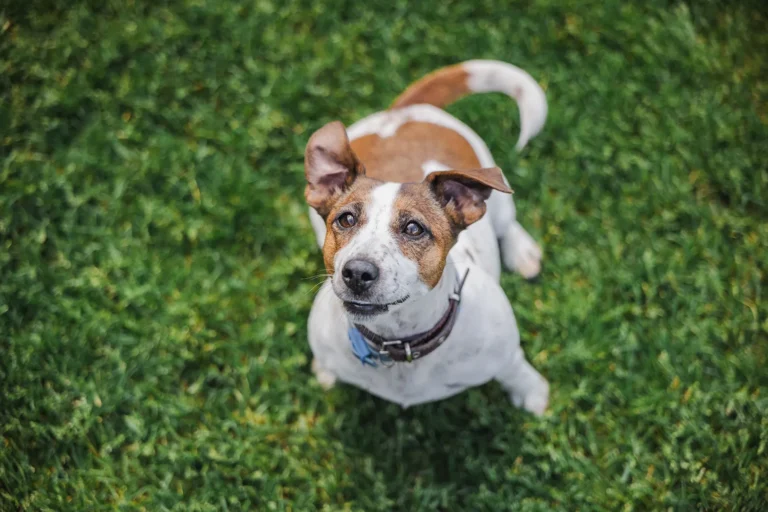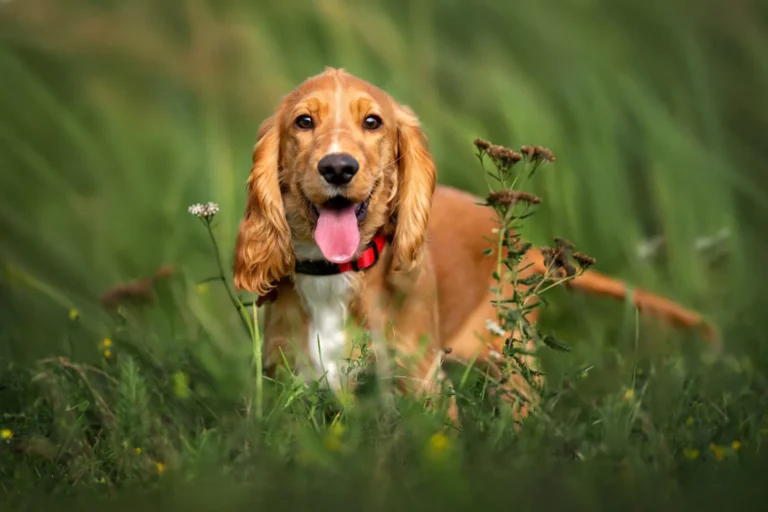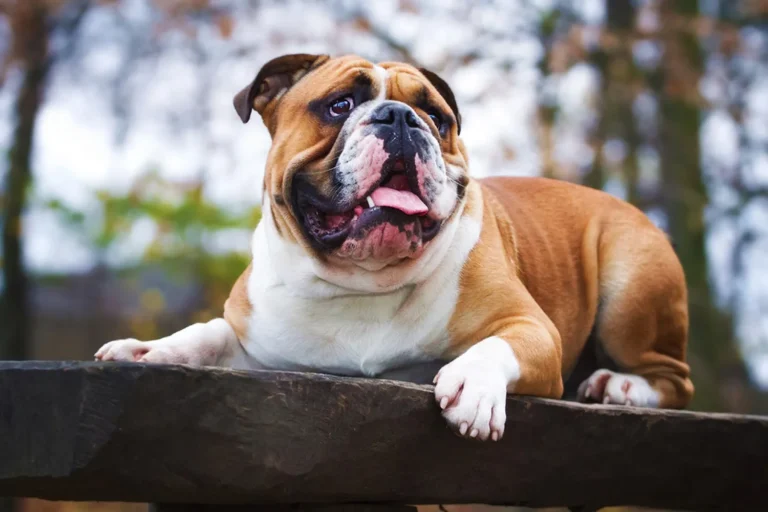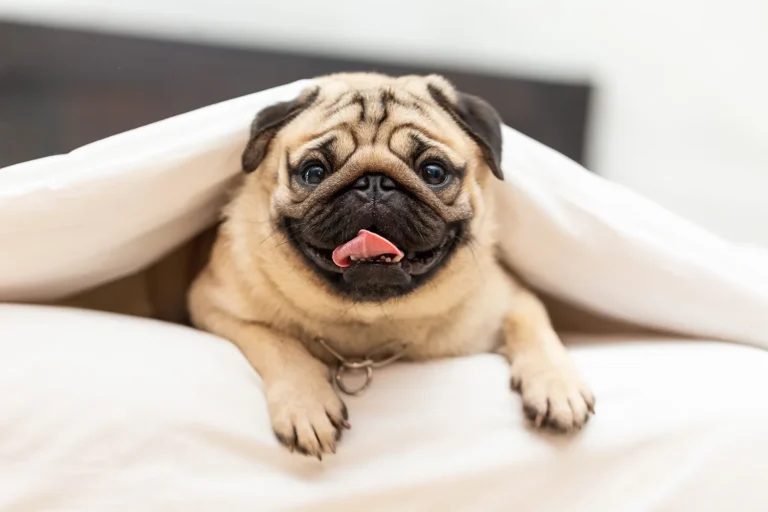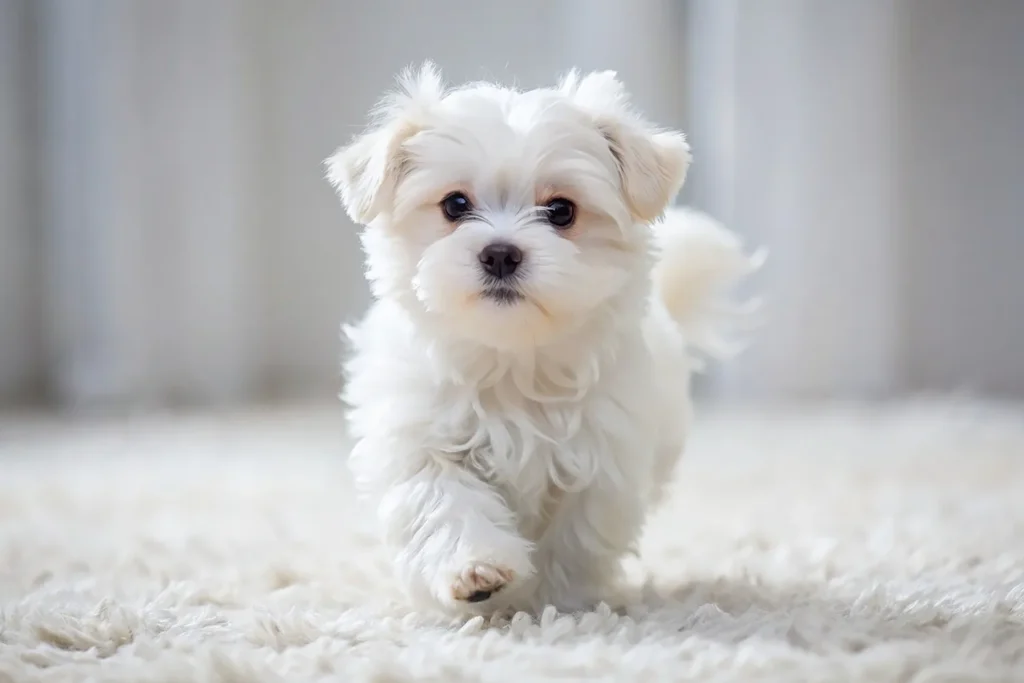
The Maltese terrier is pretty much the poster child of lapdogs: a tiny bundle of devotion that somehow fits perfectly into any spare patch of sunshine or your lap. Don’t let the size fool you, though there’s a feisty, playful spark in that little body. My friend’s Maltese, Snowball, patrols the living room like a tiny sheriff and then melts into cuddles the moment you sit down. They adore being doted on, and honestly, you’ll find yourself happy to oblige.
That famous look is hard to miss: a luxurious long white silky coat that flows when they trot and practically begs for gentle brushing. I like to do a quick daily comb out and wipe the face to keep tear stains at bay; a tidy “puppy cut” is great if you want lower maintenance. Because they’re small, I use a harness instead of a collar and teach a careful “wait” at stairs. Short play sessions, soft toys, and positive training keep that cheerful energy humming, and afterward… right back to the lap where they belong.
History and Origin of the Maltese
The Maltese has one of those histories that feels part legend, part postcard. They hail from the island of Malta, a little limestone dot in the Mediterranean that’s been a crossroads for traders and sailors for thousands of years. Accounts from sailors as far back as 1500 B.C. mention little white dogs on the island, and by the 5th century, Greek artists were already carving and painting their likeness. I remember wandering through Valletta on a breezy afternoon and a tour guide pointing out how the island’s trade brought in all kinds of treasures silks, spices, and apparently, very pampered lap dogs.
By the time the Romans were smitten, the Maltese had earned grand nicknames: “Ye Ancient Dogge of Malta” and “the Roman Ladies dog.” You can practically picture them perched on marble benches, warming laps in sunny villas and working the room with those big, dark eyes. A friend’s Maltese has that same imperious, adoring look she curls into your lap as if it’s her birthright and then gives a tiny sigh like, “Yes, this will do.”
Their charm made its way to England in the 1300s, where the upper class fell for their compact size and pure white coats. In old portraits, you’ll sometimes spot a small white dog tucked near the hems of gowns, looking as if it knows every courtly secret. Centuries later, the breed crossed the Atlantic spotlight. The Maltese was exhibited at the Westminster Kennel Club Dog Show in 1877, and the American Kennel Club officially recognized the breed in 1888. From there, their reputation as one of the oldest European toy breeds with a devoted, lap loving personality only grew.
If you bring a Maltese into your life, lean into that history. They’re companion dogs to the core happiest when they’re close. I keep a soft throw on the couch because mine settles in like a tiny aristocrat the moment I sit down. Expect daily brushing to keep that coat angelic, a few short walks, and lots of together time. They’re small enough to travel easily and social enough to make friends at every coffee shop patio. After a few centuries of perfecting the art of being adored, they’ve got it down to a science.

What Is the Maltese Breed?
Think pocket sized elegance with a dash of sass. The Maltese is a tiny, compact, square built dog wrapped in a silky white coat that drapes in long, straight sheets. On a fully grown adult, that beautiful hair hangs almost to the floor like a miniature wedding train swishing behind them. I remember the first time I saw one trotting down the sidewalk; it looked like a little cloud with feet, just floating along.
Their faces are a sweet mix of gentle and alert. Those intelligent, dark eyes don’t miss a thing especially if you so much as whisper the word “treat.” The ears are dropped and framed by that silky hair, which gives them a soft, attentive expression. You’ll also notice a tufted tail that curls neatly over the back, like a feathered plume, and when they move, they have a smooth, easy gait that makes them seem light as air. I joke that my Maltese doesn’t walk; he glides from one cuddle spot to the next.
If you’re comparing them to their cousin, the Bichon Frise, here’s the quick take: Maltese are typically a touch smaller and their coats are straight and flowing, while Bichons have shorter, curly hair that looks more like a fluffy cotton ball. My neighbor has a Bichon, and when we walk together, it’s “silky scarf” beside “puffy cloud” both adorable, just different textures.
A little practical note from experience: that gorgeous coat needs gentle, regular brushing to stay tangle free, and a quick face wipe keeps everything looking bright. I keep a small comb by the door and a soft cloth in my bag handy after a breezy walk or an enthusiastic sniff of a dewy bush. With a bit of routine care, the Maltese lives up to its reputation: small in size, big on charm, and absolutely stunning in motion.
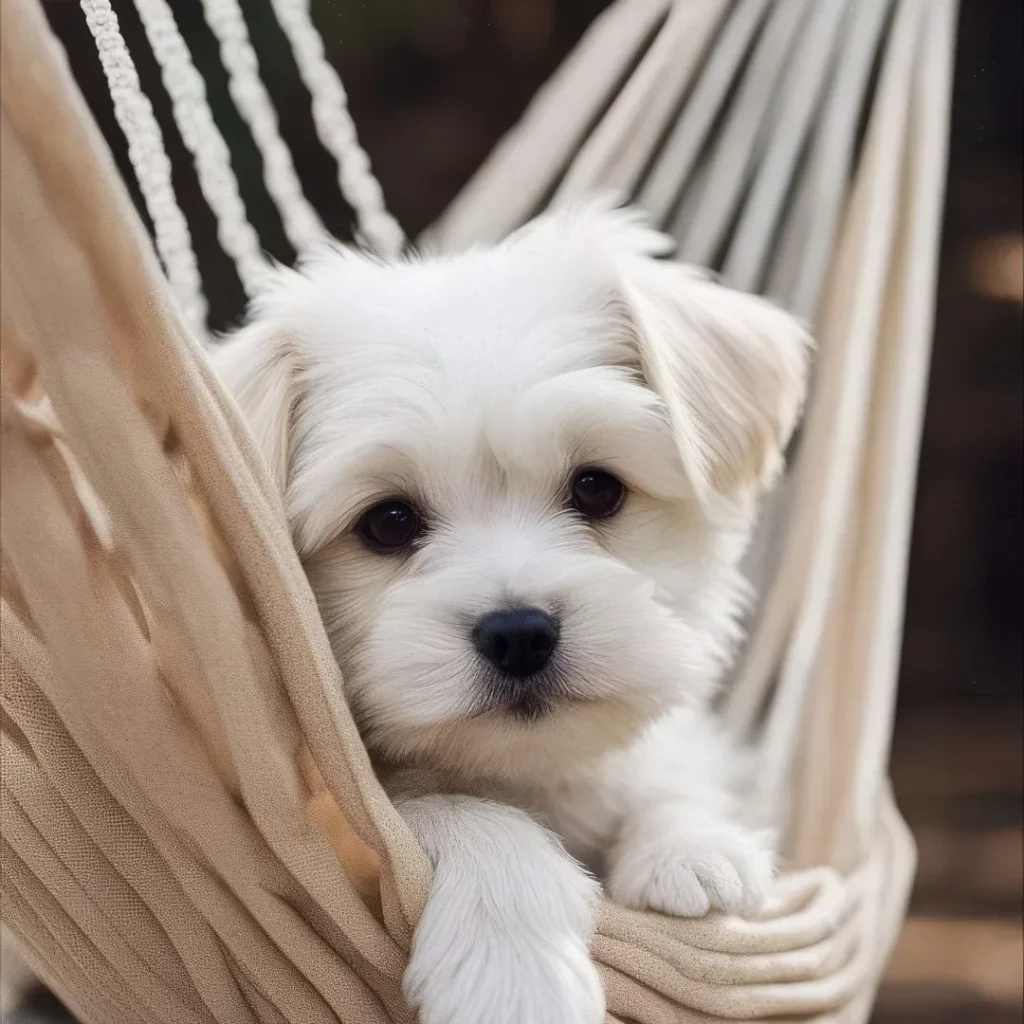
Who Is a Maltese Best For?
If you picture a little white shadow following you from kitchen to couch to home office, you’re on the right track. Maltese are wonderful apartment companions and tend to bond closely with their people. They don’t need a sprawling backyard to be happy what they really want is you. When I fostered a Maltese for a few weeks, he would arrange himself like a tiny foot warmer wherever I sat. Quick walks, some indoor play, and plenty of lap time suited him perfectly.
That devotion can come with a few caveats in busy households. Maltese are not always tolerant of younger children. Fast movements and grabby hands can make a small dog feel threatened, and a scared dog may snap. I once watched a friend’s Maltese, Coco, nervously patrol the edges of the room when her toddler nephew visited; we gave Coco a quiet space behind a baby gate, and everyone was happier. If you have kids, older children who can follow rules no chasing, no picking up, gentle petting tend to do best. Teaching “let the dog come to you” is a golden rule in Maltese homes.
They can also be a bit territorial with other dogs, especially in their own space. Many Maltese do best as the only dog in the family, soaking up all the attention. That said, good socialization from puppyhood helps a lot. Think calm, positive introductions, puppy classes with steady, polite dogs, and short, successful meetups rather than chaotic dog park free for alls. A breeder I spoke with in California swears by daily “window watching” sessions letting pups observe other dogs from a safe distance before meeting them to build confidence without overwhelm.
If you’re a single person, a couple, or a family with older kids, and you like a dog that’s affectionate, portable, and happy in an apartment, a Maltese can be a delight. They thrive with routines, gentle training, and clear boundaries so they don’t drift into “tiny tyrant” territory. I’ve found simple rules help: paws on the floor for attention, treats only for calm behavior, and structured alone time so they learn to relax without being glued to you 24/7. For homes with toddlers or with other assertive dogs, it can work but it takes foresight, patient training, and good management. For most people, though, the sweet spot is a quieter home where the Maltese can be the main furry star of the show.
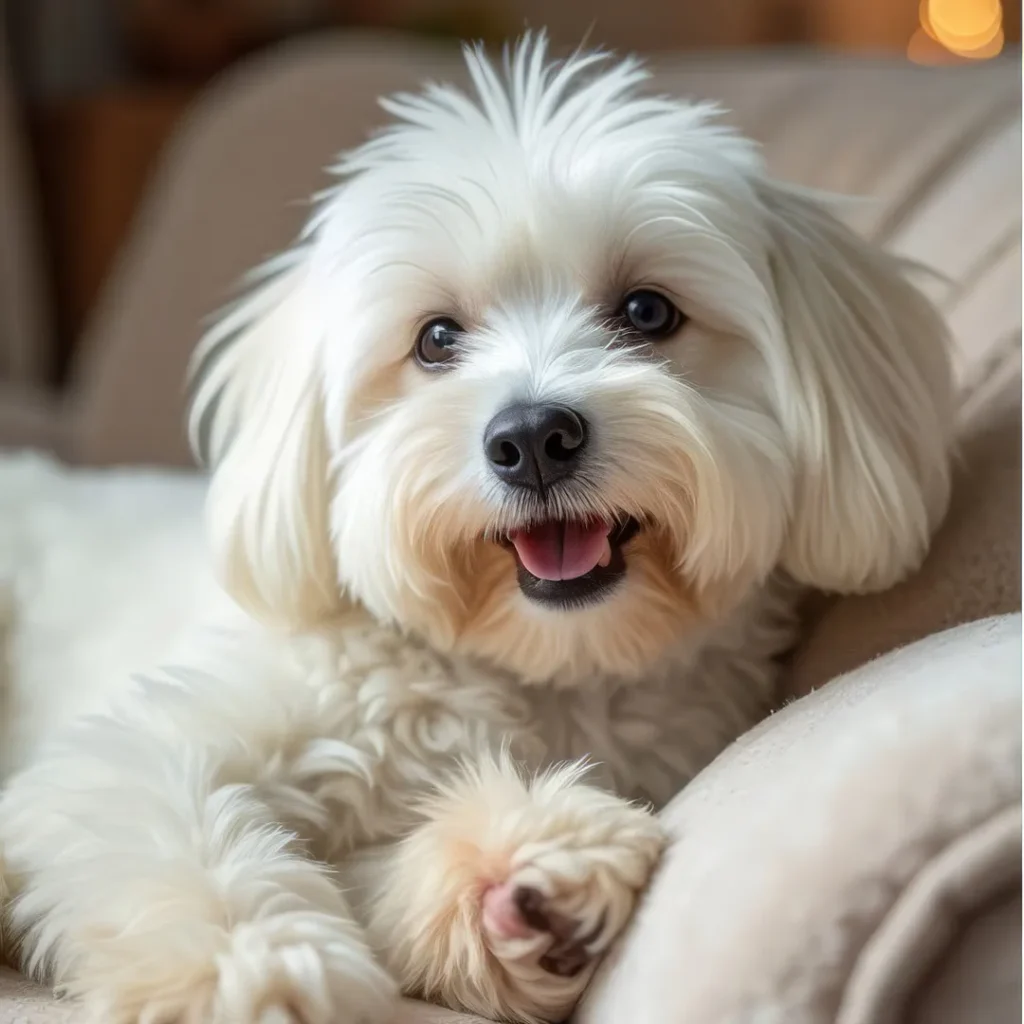
Maltese Grooming & Shedding
One of the joys of living with a Maltese is the lack of fluff tumbleweeds under the couch. They don’t have an undercoat, so they don’t shed much at all. But that silky, floor length hair? It’s like a gorgeous white gown that needs daily care to stay smooth and clean. I learned this fast with a little Maltese I helped foster named Daisy skip a day, and those angelic curtains of hair can turn into tiny Velcro patches.
Daily brushing is non negotiable, sometimes even twice a day if your Maltese loves rolling around or has a long showy coat. I keep a soft pin brush and a metal comb by the sofa and do a quick line brush while watching TV. A light spritz of leave in conditioner helps hairs glide instead of knotting. Pay extra attention behind the ears, under the armpits, and around the harness area those are mat magnets. I also tie a loose topknot to keep hair out of the eyes; it’s cute and practical.
Plan on weekly baths with a good coat conditioner to keep that coat white and soft. I like to use a gentle whitening shampoo followed by a rich conditioner, rinse thoroughly, and dry completely. Towel blot first, then use a low, warm (or cool) dryer while combing. The first time I skipped conditioner, Daisy’s coat dried into a fine web of tangles never again. A microfiber towel and patient, thorough drying make all the difference.
Most Maltese have some tear staining, even perfectly healthy ones. It’s normal, but you can keep it under control with a simple routine:
– Use warm water to clean around the eyes daily, and wash the chin after meals.
– Offer water from a bottle instead of a bowl to keep the beard drier; mineral heavy water can stain, so filtered water helps too.
– Feed from steel, ceramic, or glass bowls avoid plastic and wash bowls between feedings.
I keep a stack of cotton pads and a small squeeze bottle of warm water by the sink so I don’t skip the face wipe after breakfast. It’s a 30-second habit that pays off.
Check the ears weekly. Some Maltese grow hair inside the ear canal, which can trap moisture and lead to infection. Your vet or groomer can show you the safest way to manage it, or handle it for you. I once asked my groomer for a quick tutorial; she walked me through what to look for (smell, redness) and what not to touch. That confidence boost kept Daisy’s ears happy between appointments.
And don’t forget those nails. If your Maltese mostly walks on grass or carpet, nails won’t wear down on their own. Plan for a trim about once a month. I do “a treat per toe” to keep it positive, and I keep styptic powder on hand just in case. If you’re nervous, a vet or groomer can make it quick and stress free.
Yes, Maltese are high maintenance in the grooming department but with a little daily rhythm, they’re a breeze. The payoff is huge: a soft, snow white cuddle buddy who looks like a tiny cloud floating through your living room.
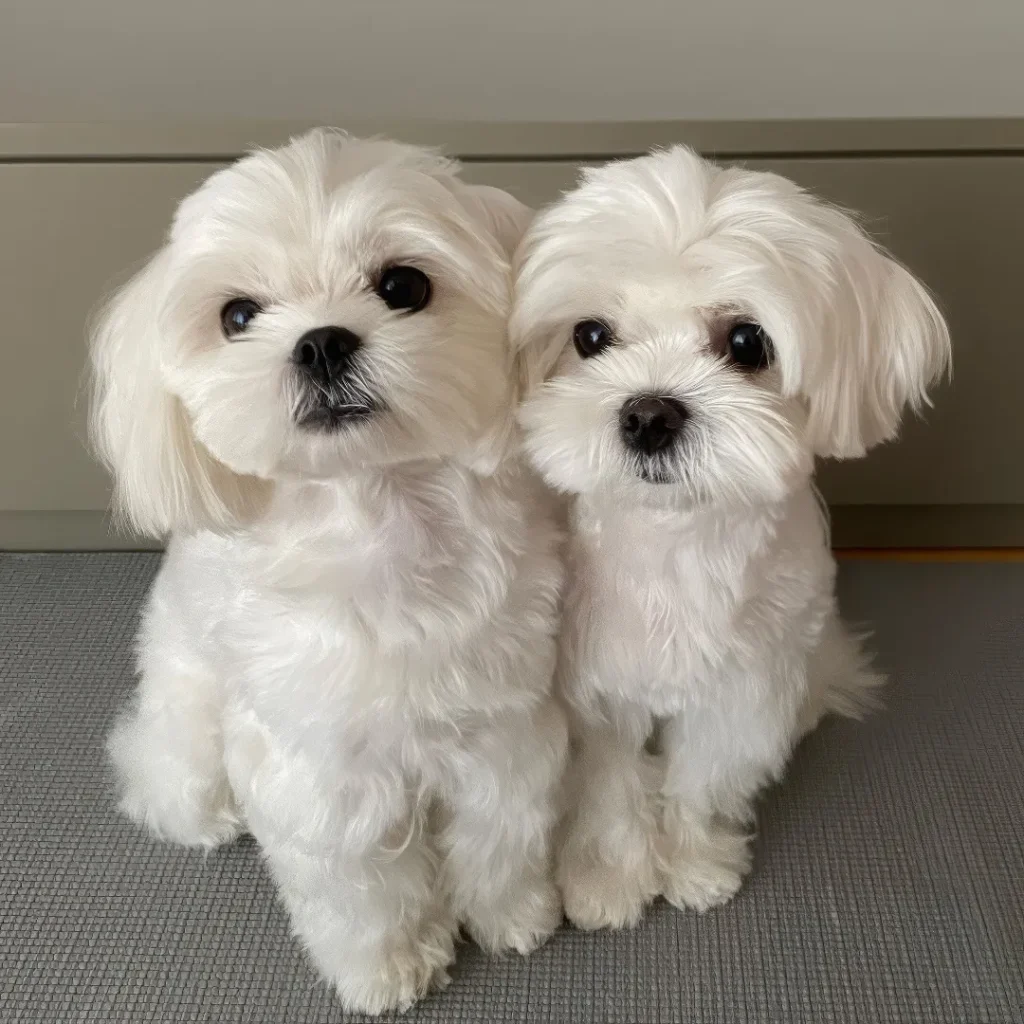
Do Maltese Bark a Lot?
Maltese are generally peaceful little companions, but they do have a voice and they’re not shy about using it when it matters. There’s a reason they’ve been called the Maltese Lion Dog these tiny fluffballs have brave hearts. If they think their people need protecting, they’ll sound the alarm at doorbells, hallway footsteps, or even suspicious squirrels. I remember my friend’s Maltese, Lulu, who treated the mail carrier like a dragon until we showed her the routine: two barks to “warn,” then a quiet reward. Within a few weeks, she’d trot back to her mat after a quick woof, proud of herself for doing her job.
Many Maltese can also struggle with separation anxiety, which turns them into nervous barkers when left alone. They’re velcro dogs at heart. What helped my own pup was practicing fake departures keys, coat, door open and close without actually leaving, then short absences that slowly got longer. A stuffed puzzle toy and soft music worked wonders, and a little camera proved she started snoozing instead of pacing. The big rule: don’t rush back the second they bark, or they’ll learn that barking makes you reappear.
Outside of those protective moments and alone time worries, most Maltese are surprisingly quiet and content to curl up by your side. Start early with gentle socialization, teach a “quiet” or “thank you” cue, reward calm behavior, and make sure they get daily mental exercise. With consistency and a bit of patience, your Maltese can be a polite watchdog who knows when to speak up and when to enjoy the snuggles.
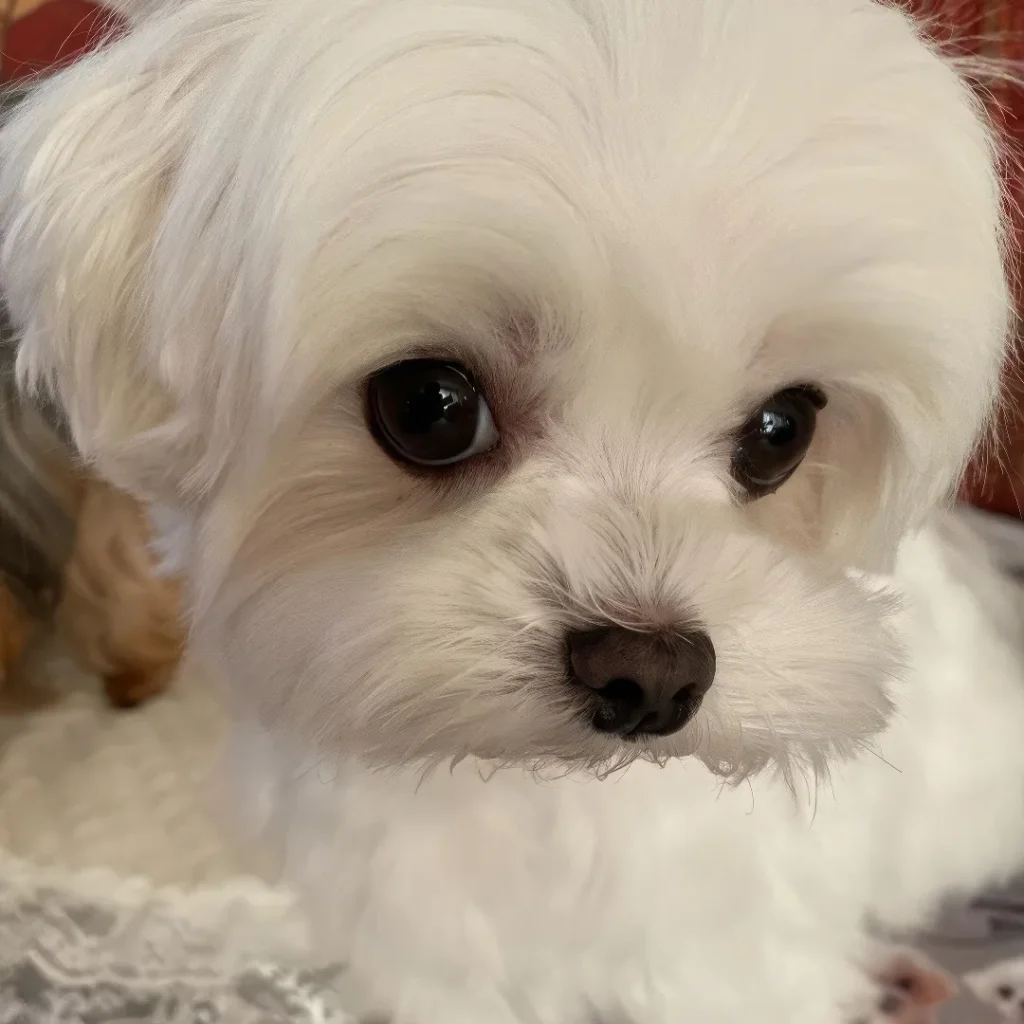
What is the average weight and height of a Maltese dog?
Maltese are tiny but sturdy little companions, usually weighing between 3 and 5 kg (about 6.6 to 11 pounds). Males typically stand around 25.4 cm tall at the withers, while females are a touch shorter at about 22.8 cm. The withers are just the top of the shoulders handy to know when you’re trying to measure them without getting distracted by all that silky hair.
Coat fluff can be deceiving. I remember thinking my friend’s Maltese looked bigger than mine until bath day revealed she was all glamour and not extra grams. For a quick weight check at home, I step on the bathroom scale with my dog, then step off and subtract my weight. To measure height, have your Maltese stand nice and straight, then measure from the floor to the top of the shoulders (not the head).
These numbers help with practical stuff picking the right harness, choosing a travel carrier, even deciding whether you need pet steps for the sofa. Most adult Maltese fall neatly into that 3-5 kg range, but a little wiggle room is normal based on build and activity level. Keep them lean with measured meals and tiny treats, and they’ll zip around happily my neighbor’s Daisy is about 4 kg and can still out zoomie dogs twice her size. https://en.wikipedia.org/wiki/Maltese_dog
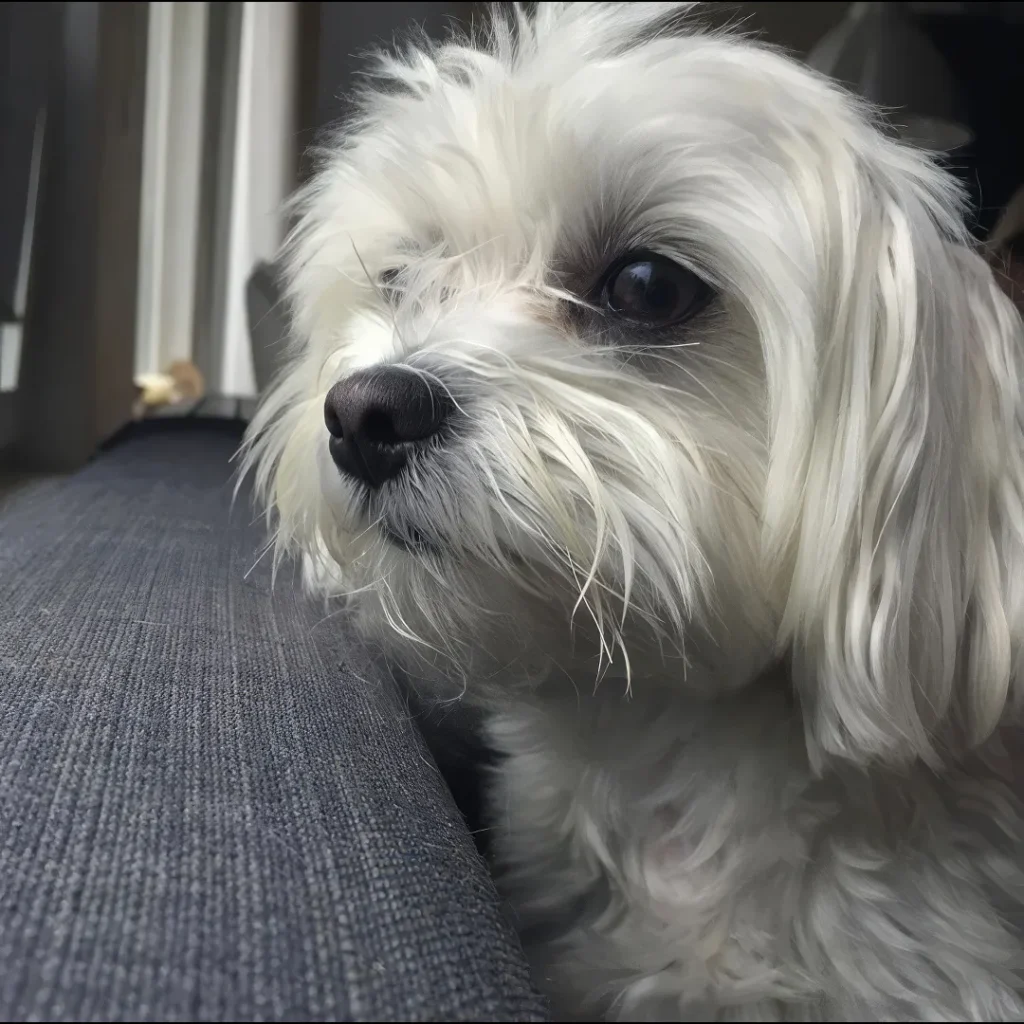
Are Maltese Easy to Train?
Bright and eager, the Maltese loves to learn and soak up attention. These little charmers catch on to new tricks quickly and often shine in dog sports and shows. I’ve watched a tiny Maltese named Daisy whip through an agility tunnel and weave poles like a furry lightning bolt she didn’t beat the big dogs on height, but her tight turns and focus made her a crowd favorite. Agility, basic commands, even speed and focus games are all on the table for this breed.
You can start formal training around 12 weeks, and a puppy class is a great place to begin. Keep sessions short and upbeat five minutes here, five minutes there with tiny, soft treats and lots of praise. Maltese can be sensitive souls, so gentle, reward based methods work best. I like a clicker for crisp timing, and I always use a harness rather than a collar for practicing recalls and loose leash walking with small dogs.
The best part? They’re life long learners. My senior Maltese mix still perks up for new tricks like “spin,” “touch,” and mini agility at home think broomstick jumps on soup cans and a laundry basket tunnel. Whether you’re eyeing agility competitions or just want a polite companion, keep training fun and consistent, and your Maltese will happily show you just how smart they are.
How Do Maltese Behave? A Look at Their Temperament and Personality
If you’re looking for a little dog with a big love for people, the Maltese is your social butterfly. Most Maltese I’ve met assume every human is a future best friend mail carriers, neighbors, the barista at the corner café. Mine used to prance into the vet’s office like it was a red carpet event, tail wagging, ready to charm the stethoscope off anyone who looked her way.
They’re bright, too surprisingly quick to learn new tricks and house rules. That eagerness to please makes training genuinely fun. Keep sessions short and upbeat, and you’ll be amazed: sit, spin, high five, even a cute little “wave” can come together in a week or two. I like to mix in puzzle toys or hide a few treats around the living room to give their clever brain something to do on rainy days. It keeps them happy and helps prevent the kind of attention seeking mischief that can pop up when they’re bored.
Of course, they’ve got that terrier like swagger the “I’m small but mighty” mindset. This can show up as a bit of feistiness, especially around bigger dogs or when play gets too rowdy with kids. I once watched a Maltese confidently try to direct traffic at the dog park, marching up to a Golden Retriever and telling him off for running too fast. It was hilarious, but it’s also a reminder: early socialization and supervision are key. Introduce them to gentle, well mannered dogs, teach a solid “come” and “leave it,” and help kids learn to be calm and respectful. A little structure goes a long way in keeping that bravery from tipping into bossiness.
With good training and positive experiences, a Maltese shines active, lively, loving, and wonderfully friendly. They’re happiest with daily walks, a few bursts of play, and plenty of cuddle time on the couch. Set consistent boundaries, reward the good stuff, and give them lots of chances to succeed. In return, you get a tiny companion with a giant heart who makes even ordinary days feel a bit more special.
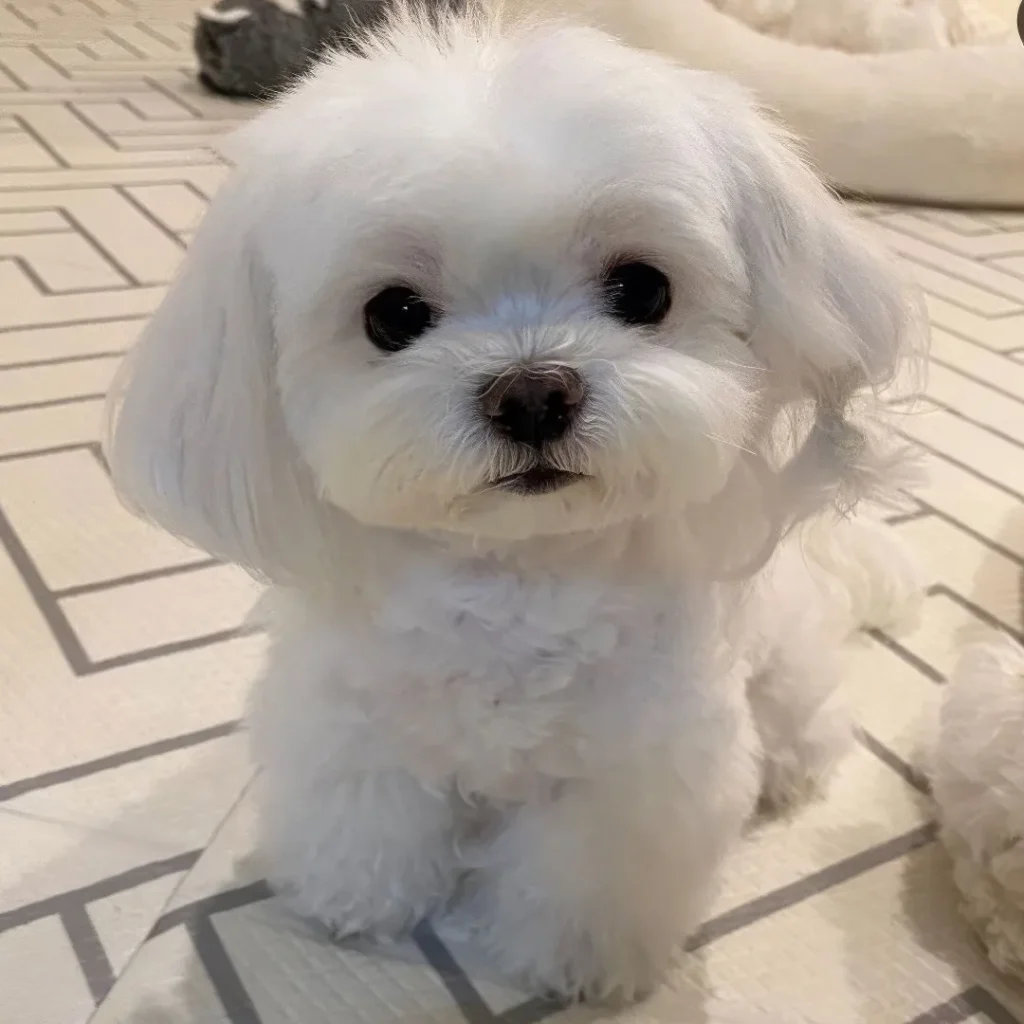
Do Maltese Have Common Health Issues?
Maltese are generally healthy little charmers, but like every breed, they do have a few quirks to watch for. Knowing the signs early makes a world of difference. I always tell new Maltese owners: enjoy the cuddles and the zoomies, and keep an eye out for the patterns below so you can catch anything early.
White Dog Shaker Syndrome is one you might hear about with small white breeds. It causes full body tremors, and while it looks scary, vets believe it isn’t painful and may be related to an autoimmune response. I remember visiting a friend whose Maltese would tremble like a tiny maraca when he got overly excited; with vet guidance and a calm routine, he did just fine. If your pup starts shaking, call your vet treatment and a quiet space often help a lot.
Liver shunts (often called portosystemic shunts) are a congenital issue where blood skips the liver’s normal “filter,” letting waste circulate. Puppies with shunts may be small for their age or seem confused, especially after meals. You might also notice tummy troubles like diarrhea or constipation, excessive thirst and urination, drooling, even seizures. A bile acids test or imaging can confirm it. I fostered a tiny Maltese who struggled to gain weight; once diagnosed, a special diet and a surgeon’s magic gave him a fresh start. The big tip here: if your Maltese puppy isn’t thriving or acts off after eating, don’t wait ask your vet about a shunt workup.
Collapsed trachea is another concern in little dogs. The cartilage of the windpipe can weaken and collapse, leading to that classic goose honk cough, especially when pulling on a collar or getting excited. It can also happen after an injury. I switched to a soft harness years ago after one dramatic coughing fit on a walk problem solved. Keep your Maltese slim, avoid smoky or dusty air, and use a harness, not a neck collar.
Hip dysplasia can show up in Maltese too, though we often hear about it in larger breeds. The ball and socket of the hip don’t fit smoothly, which can be uncomfortable. You might see stiffness, bunny hopping, or reluctance to jump. Catching it young helps; some cases can be corrected, especially early on. Day to day, I stick to non slip rugs, ramps to the couch, and vet approved joint support to keep those hips happy.
Bottom line: regular checkups, a healthy weight, and small lifestyle tweaks go a long way. Ask breeders about health testing, consider pet insurance, and trust your gut if something feels off, your vet will want to know. Your Maltese will repay you with years of snuggles and sass.
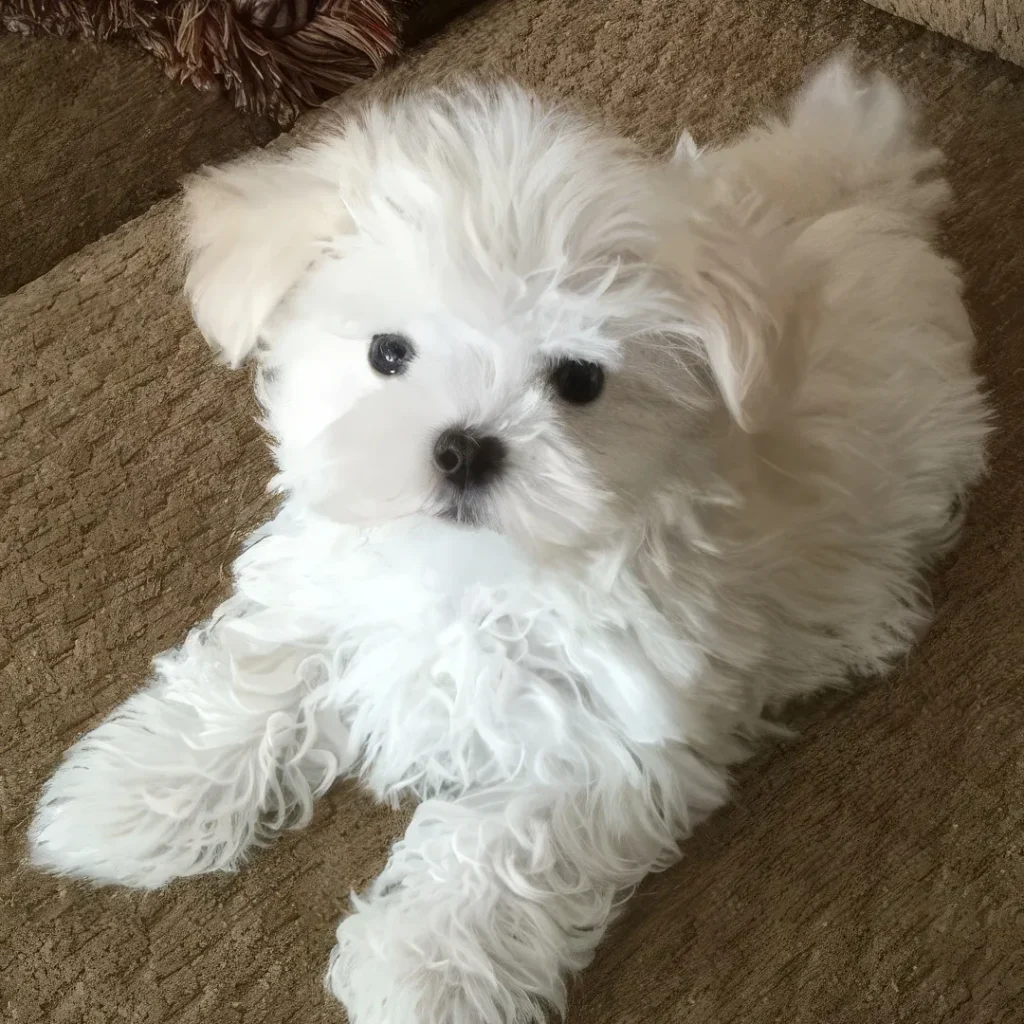
What Is the Lifespan of a Maltese?
Most Maltese live between 12 and 15 years, which is a lovely long stretch of time for such a tiny companion. Small breeds often age gracefully, and the Maltese is no exception. My neighbor’s Maltese, Daisy, is 13 and still does her happy trot to the door like she invented it proof that many make it to the upper end of that range with good care.
If you want your little cloud to enjoy as many candles on the cake as possible, focus on the basics: a high-quality diet made for toy breeds, steady but gentle exercise (think brisk walks and short play sessions), and regular vet checkups. Don’t skip dental care Maltese are notorious for tricky teeth, and clean chompers can boost overall health. I like to turn tooth brushing into a mini routine after our evening stroll; a pea sized dog toothpaste and lots of praise go a long way. Keep their weight in check, use steps or ramps to protect those tiny joints from big jumps, and keep their minds busy with easy puzzle toys or training refreshers. With a little consistency and a lot of love, your Maltese has a great chance of reaching the higher end of that 12-15 year span.
How Much Should You Feed a Maltese?
Maltese might be tiny, but they can be enthusiastic eaters. The trick is giving them just enough to fuel their zoomies without turning that elegant fluff into a little marshmallow.
For puppies: Once your Maltese pup is weaned, choose a formula made for small breed puppies. Start with about 1/4 cup total per day, divided into three small meals. As your puppy grows, you can nudge that amount up a bit, watching their body condition and energy. Around 6 months, it’s time to transition to an adult diet. I like to switch foods gradually over a week mixing a little more adult food each day so tummies stay happy. A quick tip from my kitchen: use a real measuring cup (the standard 1-cup kind) so portions stay consistent. When my little Luna hit a growth spurt at four months, I added a tablespoon or two to her daily total and it made a world of difference in her pep without upsetting her stomach.
For adults: Feed according to size. If your Maltese is between 1 and 2 kilograms, aim for 1/4 to 1/2 cup of dog food per day. Over 2 kilograms usually means 1/2 to 3/4 cup daily. Split the total into two meals. That steady schedule keeps energy even and helps prevent scavenging. I learned the hard way that free feeding can pack on pounds; after my friend’s Maltese ballooned on bottomless kibble, we switched to measured meals and the weight came off gently.
A few extra tips:
– Treats count keep them to about 10% of the daily intake and trim the meal a smidge if training day runs long.
– If your Maltese seems ravenous or sluggish, adjust by a tablespoon at a time and recheck in a week.
– Picky eater? A splash of warm water over kibble can boost aroma, or use a puzzle bowl to make mealtime fun.
– Keep fresh water available and check stool quality firm and easy to pick up is a good sign.
Every dog is a little different, so use these amounts as a starting point and check with your vet if you’re unsure. Your Maltese will tell you with bright eyes, steady energy, and a happy waistline when you’ve got it just right.
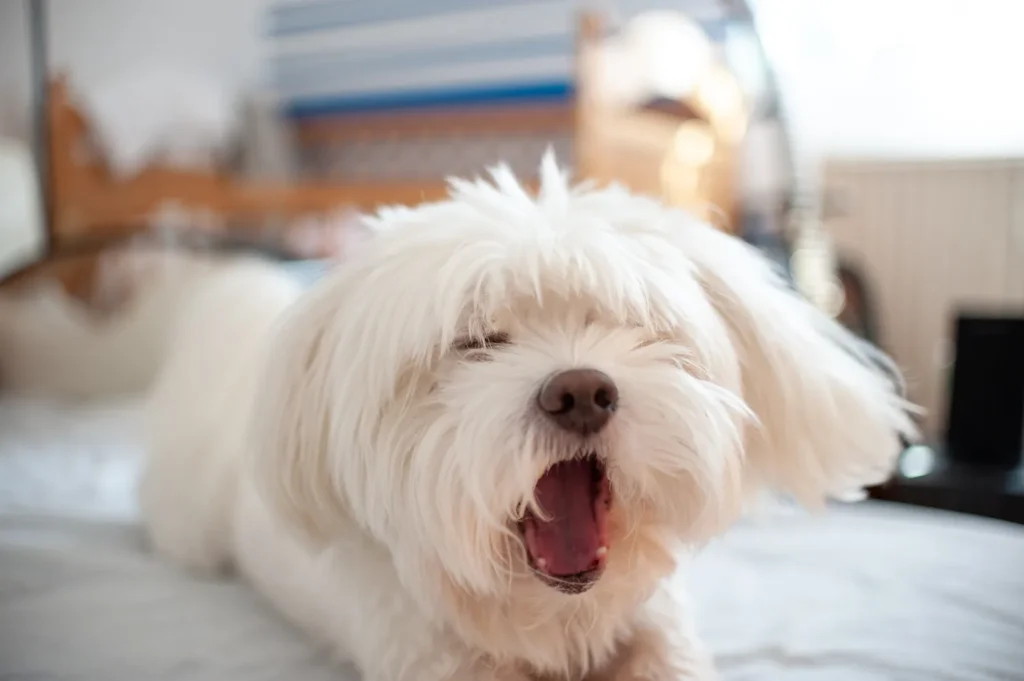
Maltese FAQs: Real Life Answers
Is a Maltese dog ideal for a first time dog owner?
Absolutely. Maltese are small, playful, and eager to please, which makes training feel more like a fun game than a chore. They’re also surprisingly protective for their size mine thinks the mail carrier is a dragon that must be bravely confronted. They fit beautifully into apartment life, don’t need miles of running, and thrive on short, consistent training sessions with lots of praise and treats. A few tips from my first week: be gentle with their tiny bodies (they’re more delicate than they realize), start potty training early with a regular schedule, and teach a “quiet” cue to curb doorbell barking. If you like routine and affection, a Maltese will fit right into your rhythm.
Do Maltese dogs suffer from separation anxiety?
Many do. They adore their people and can struggle when left alone, especially if their routine suddenly changes. I learned to practice mini “goodbyes” around the house grabbing my keys, stepping out for two minutes, then five, then ten until my pup realized alone time wasn’t the end of the world. Common signs include:
– Chewing and being destructive
– Having potty accidents when the owner is away
– Being very clingy and whiny when the owner is preparing to leave
– Scratching furniture and doors
– Self isolation when the owner returns
– Trying to escape when the owner leaves
– Excessive barking
Good news: you can manage it with training and a steady routine. Keep departures and arrivals calm (no big emotional scenes), leave a food puzzle or safe chew, and consider a crate or playpen as a cozy den. My friend set up a pet camera; seeing her Maltese settle after five minutes changed everything. Daily mental exercise sniff walks, trick training works wonders. These little dogs excel when life is predictable, so introduce changes gradually.
Are Maltese dogs hypoallergenic dogs?
Maltese are considered hypoallergenic. They have no undercoat and don’t shed much, and their small size means less dander and drool floating around. My sneezy brother handles my Maltese just fine, even though he reacts to heavy shedders. Still, every person’s sensitivities are different, so meet a Maltese before committing. Regular brushing and bathing, washing dog bedding, and a HEPA filter can make life even easier for allergy prone homes.
Will a Maltese need professional grooming?
You can absolutely DIY. Daily brushing and regular baths keep that silky coat in great shape, and it’s a lovely bonding routine. I keep a little treat jar by the brush suddenly grooming time is the best part of the day. Focus on:
– Daily brushing with a pin brush and comb (especially behind ears and under the legs)
– Regular bathing and thorough drying to prevent mats
– Nail trims, ear cleaning, and gentle eye area wiping to manage tear staining
– A tidy trim around the paws and sanitary areas if you’re comfortable
An occasional professional grooming session is a nice treat and leaves them extra soft and dazzlingly white. If you prefer low maintenance, a “puppy cut” keeps things simple; if you love the flowing look, plan on a bit more daily care. Either way, that little white cloud will turn heads on every walk.
Disclaimer:
This article is for informational purposes only and doesn’t replace professional veterinary or training advice. Always consult a certified vet or dog trainer for guidance specific to your pup.
